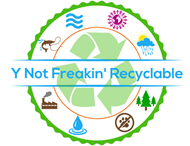[ad_1]
With Easter right around the corner and many activities canceled because of COVID-19, there’s no better time to roll up your sleeves and have a fun afternoon dying eggs with the family (or with roommates or alone!). It’s not safe to make a trip to the store just for an egg-dying kit, not to mention these kits are often filled with artificial dyes or harmful glitter. Luckily, it’s easy to make your own natural dyes with pantry and produce staples. Here are several ways to make natural dyes for your Easter eggs.

Natural dyes from produce and spices
The produce, spices and even coffee around your kitchen can create a whole rainbow of colorful dyes that are completely natural and non-toxic. Here are some ways to create pink, purple, blue, green, orange and brown dyes with natural ingredients.
Beets
Beets will turn eggs into a vibrant pink color that screams spring. Bring 1-2 cups of water to a boil, then add 1 cup of shredded or cut beets and let simmer for about 20 minutes. After straining out the beets, add 1-2 tablespoons of white vinegar. Pour the natural dye liquid into a jar, and soak your hard-boiled eggs in the jar for at least 30 minutes or at most overnight for the brightest hues. If you do soak eggs for longer than 30 minutes, be sure to move them into the refrigerator.
Onion skins
Onion skins are nearly as valuable as gold, so don’t throw them away! In addition to making rich, umami-packed homemade broths, onion skins can dye your Easter eggs a warm, sunset-like orange. Bring 2 cups of onion skins in 1-2 cups of water to a boil, then simmer for 20 minutes. Strain and add 1-2 tablespoons of white vinegar. Soak the eggs in this dye for 30 minutes. Again, you can leave the eggs soaking overnight for best results.
Turmeric
Turmeric is another great option for dying eggs and turns them a yellow evocative of sunshine. Add 2 tablespoons of turmeric into 1-2 cups of water and simmer on the stove for 20 to 30 minutes. Add 1 tablespoon of white vinegar and pour the mixture into a jar. Soak the eggs for at least 30 minutes.
Coffee
Although leftover coffee might be a rarity during these work-from-home days, you can put any you do have on hand to good use while dying Easter eggs. Add 1 tablespoon of vinegar to 1-2 cups of coffee, then soak eggs for at least 30 minutes for a rustic brown shade.
Blueberries
If you have some blueberries that are about to spoil or perhaps an abundance of these fruits in the freezer, pour 1 cup into 1-2 cups of boiling water, then set to simmer for 30 minutes. Next, add two tablespoons of white vinegar and soak your eggs for a lovely, deep-blue color.

Avocado skins
Don’t compost those avocado skins just yet! Did you know they can actually work well as a light pink dying agent? Simmer the skins of five to six avocados in 2 cups of water for 30 minutes, then add 1 tablespoon of white vinegar. Soak the eggs in the natural dye for at least 30 minutes for a perfect blush pink tone.
Related: How to grow an avocado tree from an avocado pit
Purple cabbage
No, purple cabbage won’t turn your eggs purple. Instead, it turns them into a light blue/periwinkle color. Simply cut one small head of cabbage and add to 2-3 cups of boiling water, then simmer for 30 minutes. Add the 1-2 tablespoons of white vinegar, and soak eggs for another 30 minutes.
Paprika
For a red-orange shade, add 2 tablespoons of paprika to 1 cup of boiling water. Simmer for 30 minutes. Add a tablespoon of white vinegar. Soak the eggs in the resulting dye for at least 30 minutes.
Spirulina
Spirulina turns smoothies into a rich shade of green, so it is no surprise that it will do the same for your Easter eggs. Because it is vibrant (not to mention pricey), you only need to add a few teaspoons of spirulina into 1 cup of water. Simmer for 30 minutes and add a tablespoon of white vinegar. Soak the eggs until they reach your desired shade of green.
Pomegranate
Nothing will stain your clothes faster than opening up a pomegranate, so use those bold red juices to naturally dye eggs for impressive results. You can soak eggs directly in undiluted pomegranate juice.
Spinach
Wilted greens on hand? Toss them in a few cups of water to simmer on the stove for 30 minutes. Add a couple of tablespoons of white vinegar, then soak the eggs in the cooled liquid for at least 30 minutes. Spinach will create a very faint green dye, so you might want to let eggs soak in this specific dye overnight in the fridge for the most noticeable color.
Related: Fight food waste with these 11 ways to use leftover greens before they spoil

How to add fun designs to your naturally dyed eggs
If your family prefers adding fun stripes, drawings or tie-dye, you can do so easily, even with natural dyes.
Stripes
Use a white non-toxic crayon to draw stripes on an egg before letting it soak in dye, or place a few rubber bands around the egg before dying it to create stripes.
Drawings
Use a white non-toxic crayon to write names or doodle on each egg before allowing it to soak in the dyes. The dye will not stick to the crayon, so each egg will come out with a unique design. You can also draw on the eggs with non-toxic markers after they have been dyed and dried.
Tie-dye
The tie-dye method takes a bit of patience but is fun for children and adults alike. Wrap an undyed egg in rubber bands, leaving some spaces open. Soak the egg in one color for at least 30 minutes. Remove a few of the rubber bands, and/or add more rubber bands in new spots on the egg. Soak in a different color for at least 30 minutes. Repeat with different rubber band placements and colors until you reach the desired tie-dye effect.
Images via Silviarita, Annca, The Paessel Family and Monika Grabkowska
 Pollution Climate Change Holocene Deforestation Population Acidification Y Not Freakin' Recyclable
Pollution Climate Change Holocene Deforestation Population Acidification Y Not Freakin' Recyclable



